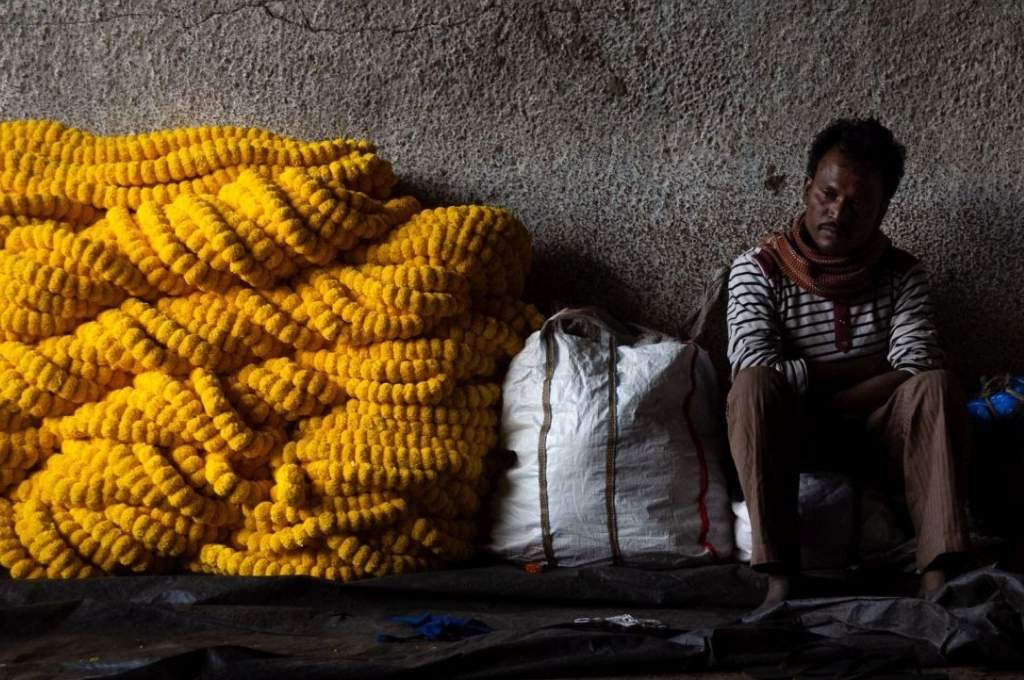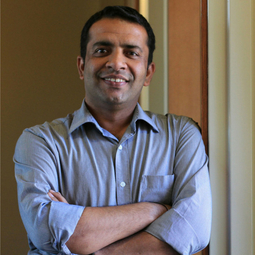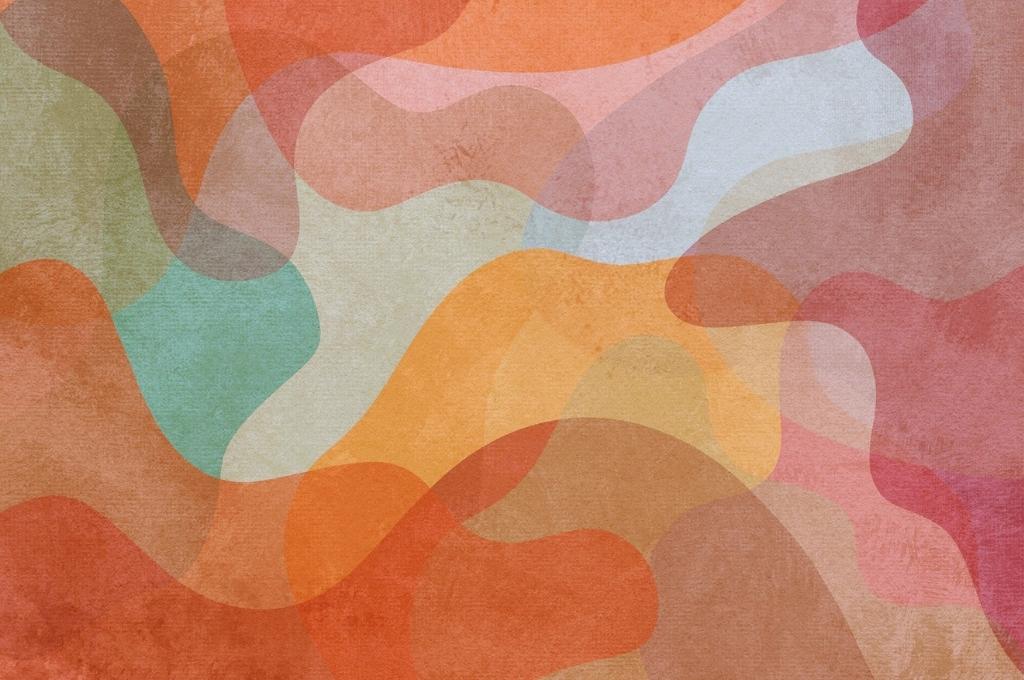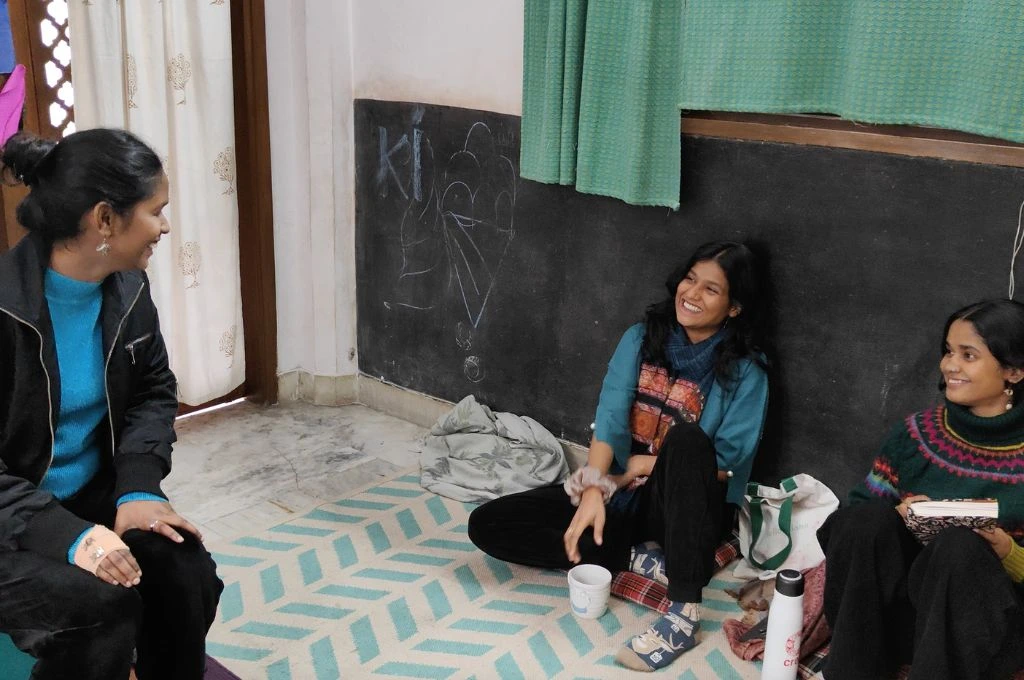We tend to club all marginalised groups as one monolith. We call them all ‘vulnerable’ populations. At Goonj, as part of our ‘Dignity for Work’ initiative, also known as ‘Cloth for Work’, when we earlier went to villages, we would view every single person as a villager. That was our lens. We did not differentiate whether people were single mothers, widows, people with disabilities, devadasis, and so on. But the pandemic has brought out the stark differences in the breadth and depth of vulnerability that people are facing today.
What happens when the average person, who was earlier earning wages and could afford food and shelter, is now unable to do so? What happens to those, at the other end of the spectrum, who were already financially poor and vulnerable in pre-pandemic times? According to a study by Azim Premji University, approximately 230 million people in India fell into poverty in 2020 because of the economic repercussions of COVID-19. With more and more people being pushed below the poverty line, and in some cases to further depths of poverty and vulnerability, there is now a hierarchy of marginalisation. While the most visible of the vulnerable populations—migrant labourers, farmers, those afflicted by COVID-19—may still be able to receive some attention, those who were already marginalised—patients with leprosy and their families, people with disabilities, transgender people, devadasis, sex workers, those living with HIV—have further become invisible in society.
The missed-out communities
Last year, the conversations were all about migrant labourers—who walked hundreds of kilometres to reach their homes. But there are those who never really entered our range of vision in the first place, for example, people with leprosy and their families. According to the World Health Organisation, India with 120,334 cases and Indonesia with 17,017 cases, contribute to 92 percent of leprosy cases across Asia. There are a total of 758 leprosy colonies in India with Odisha, Uttar Pradesh, and Tamil Nadu accounting for most. A total of 76 rehabilitation centres, care homes, and hospitals cum rehabilitation centres exist where leprosy colonies have been found. Through our work in this space, we’ve seen that, typically, people with leprosy end up in two professions—begging and rag-picking. With the lockdown and the consequent mobility restrictions, however, both these have not been an option. Thus, their only sources of income have vanished, even though their needs have not.

While large sections of our society are focussed on ensuring oxygen supply, medical support, and food support, we must remember that for many of these missed-out communities, there is an even greater need now for certain basics. A simple example is that of a piece of cotton bandage and ointment for people with leprosy, who need to change their dressings regularly. Over the last few months, we have come across many such cases in which, the condition of their wound has worsened due to the absence of these materials, increasing their risk of disability. Similarly, people with HIV require specific medicines regularly, which cannot be accessed at a regular pharmacy without prescriptions.
A study by the National Human Rights Commission carried out in Uttar Pradesh and Delhi in 2017—the first-ever study on the rights of transgender people—found that only around six percent of transgender people were employed in the social and private sector, while a majority of them worked in the informal sector. It estimated that approximately 10 percent were engaged in begging. This has further worsened with the numerous lockdowns in 2020, as transgender people across the country have had no access to work, with or without dignity. The community has also lost a primary source of income as celebrations have become smaller and more intimate.
At the other end of the spectrum are artists, musicians, magicians, artisans, weavers, the crews working in the film and music industry, and all those who managed to earn a living, pre-pandemic, but are unable to do so now because of restrictions imposed by repeated lockdowns.
Look after your own people
The world of art and artistes is one that has been severely impacted. For instance, through our work at Goonj, we found that approximately 120 qawwals (musicians who sing qawwali, a form of Sufi Islamic devotional music) in Delhi, some of whom are part of a lineage of well-known gharanas (a genre of Indian classical music with a distinctive style that traces back to a particular instructor or region), are currently completely out of work. And with no opportunities to perform in the near future, they are left without a source of income and minimal savings. Once a self-sufficient section of people, they have now become vulnerable. They are unlikely to reach out for help because they have never done this before; they see themselves as independent. It is we who need to reach out to them; it is our duty to reach out to the custodians of Indian art, culture and heritage.
As some of these stars undertake fundraisers for COVID-19, it would definitely help, if instead of calling upon the common person to contribute, bigger celebrities pool their own resources and direct funds back to their own clusters and sectors.
Organisations such as Goonj and other nonprofits can fill some temporary gaps. However, the larger onus is on the people who have made fortunes because of the work of thousands of these artistes. It then falls on the entertainment industry and the stars in allied businesses to stand with their fellow-workers. The music, film, and art community needs to do more for the people who form the backbone of their industries. For the stars—the people higher up in the fame chain—there may have been a break in income, but for support artistes, craftspeople, and technicians, it is a question of survival. As some of these stars undertake fundraisers for COVID-19, it would definitely help, if instead of calling upon the common person to contribute, bigger celebrities pool their own resources and direct funds back to their own clusters and sectors—films, music, and art, where the pandemic has pushed thousands of technical and artistic labour into economic distress.
Continue to fund your earlier, non-disaster related programmes
For sectors and causes that do not have wealthy individuals within their ranks, their only support structures are their regular, peace-time contributors. Funders, sponsors, and individuals who support a range of causes—trafficking, people with disabilities, transgender people, rural arts and crafts, gender-based violence, child protection—must continue to do so. As a matter of fact, they should do more during the pandemic and other disasters. Because in most cases, these communities become even more vulnerable when support for them is pulled back and diverted to immediate relief in other places.
Times of disaster are particularly hard for organisations that work with vulnerable groups because even during normal times they work with limited funding and resources.
In many cases, the specific needs of these communities cannot be met through any other mechanisms—medicines for people suffering from cancer, HIV, leprosy, TB; shelters for women and children at risk, etc. Therefore, foundations and institutions supporting these causes must at least sustain, if not increase funding to these vulnerable groups. Like all of us, these communities also need additional money for health and hygiene and have to pay increased prices of commodities, which is a given fact of any disaster. As many of these groups are also losing their livelihoods, they require additional support to tide them through these times. Diverting funds to the disaster at hand pushes larger segments of people into poverty and distress.
We saw this first hand during the Kerala floods, when we ended up providing food and other material to children’s organisations in Andhra Pradesh and Tamil Nadu because their money givers moved money away from them to the flood relief effort, and the children had no food as a result. Times of disaster are particularly hard for organisations that work with vulnerable groups because even during normal times they work with limited funding and resources.
The underlying fact is that intergenerational issues such as poverty, lack of livelihoods, and hunger are further aggravated by the increasing frequency and scale of disasters in a region, and these in turn intensify the need to reach out to these vulnerable sections of society. There is, therefore, a dire need to work extensively with nonprofits and community-based organisations that work closely with the most marginalised groups.
These are very difficult times for the world. The true character of our society will be reflected in how we stand with the most missed-out communities amongst us and that will also decide who we are.
—
Know more
- Read this to understand the hunger crisis due to the second-wave of the pandemic in India.
- Learn more about leprosy in India here.
- Get insights into persistent challenges prevalent on-ground, across India during COVID-19 here.
Do more
- Support nonprofits working on COVID-19 relief efforts and initiatives here.





